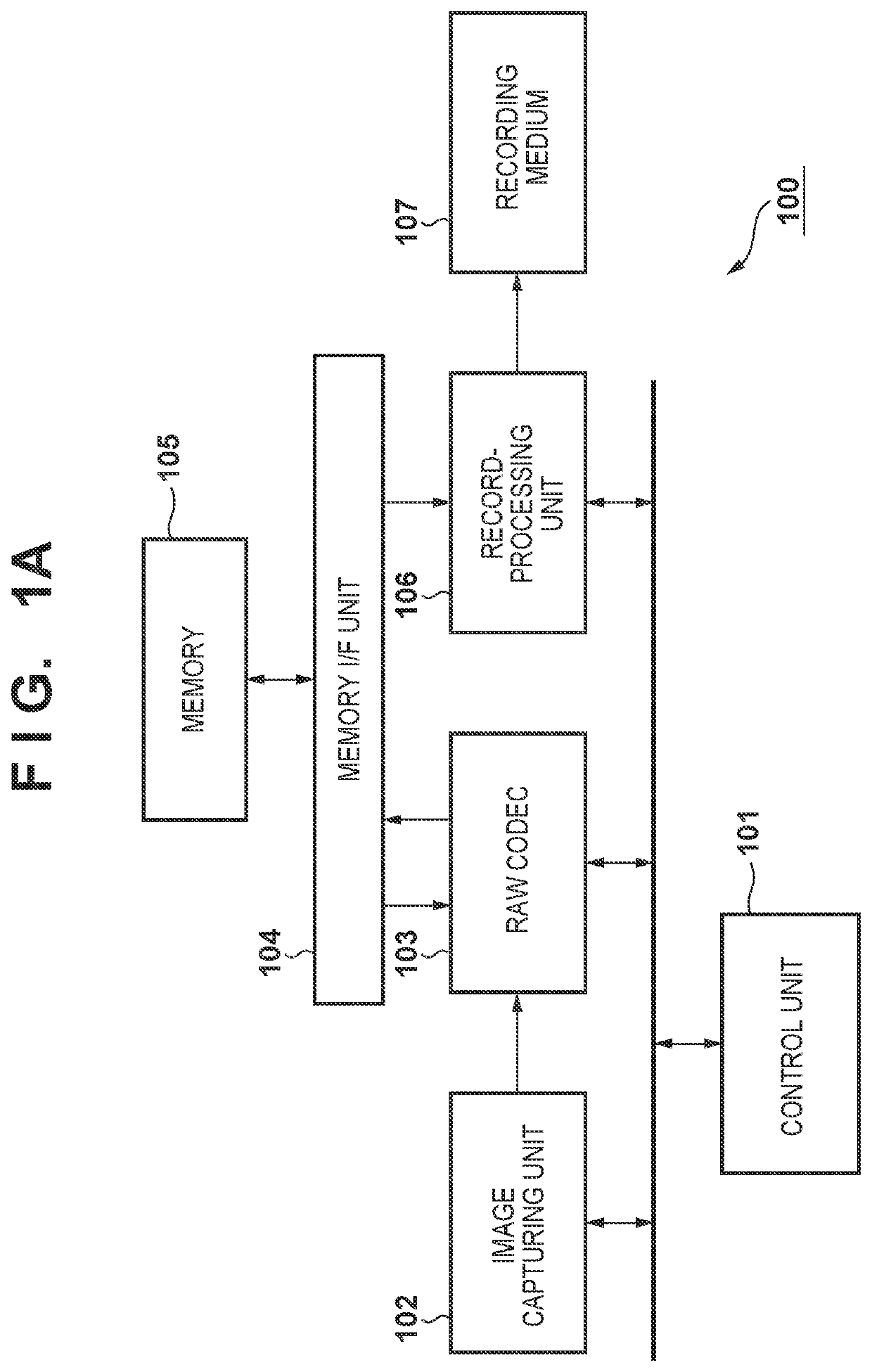Image encoding apparatus, image decoding apparatus, control methods thereof, and non-transitory computer-readable storage medium
a technology of image encoding and decoding apparatus, applied in electrical apparatus, digital video signal modification, pictoral communication, etc., can solve problems such as the difficulty of recording raw data at a compact size, and achieve the effect of suppressing a drop in image quality
- Summary
- Abstract
- Description
- Claims
- Application Information
AI Technical Summary
Benefits of technology
Problems solved by technology
Method used
Image
Examples
first embodiment
[0036]FIG. 1A is a block diagram illustrating the main configuration, pertaining to encoding, in an image capturing apparatus 100 according to an embodiment. The image capturing apparatus 100 can be realized as a digital camera or a digital video camera, for example. Aside from these, the image capturing apparatus 100 can also be realized as any information processing terminal or image processing apparatus, such as a personal computer, a mobile phone, a smartphone, a PDA, a tablet terminal, a mobile media player, or the like. FIG. 1A assumes a situation where the device functions as an image capturing apparatus, i.e. a digital camera or the like, and therefore illustrates a configuration that includes an image capturing unit 102. However, the present invention can be applied in an image encoding apparatus, an image decoding apparatus, an image recording apparatus, an image compression apparatus, an image restoring apparatus, or the like capable of recording and playing back RAW imag...
second embodiment
[0091]A second embodiment will be described next. The image capturing apparatus according to the present second embodiment can have the same configuration as the image capturing apparatus according to the first embodiment. However, the units for which the first quantization parameters are generated by the quantization parameter generating unit 203 of the RAW codec 103, and the process for generating the individual second quantization parameters for each channel and each sub-band, are different. Configurations that are the same as in the first embodiment will not be described in the present embodiment, with focus being given primarily to configurations pertaining to the different method of generating the quantization parameters.
[0092]FIG. 12A illustrates units for evaluating sub-band data pertaining to image quality control and updating quantization parameters in a case where each channel is divided into sub-bands at lev=3. The common first quantization parameters (QpBs) are generate...
third embodiment
[0099]A third embodiment of the invention will be described next. FIG. 23A illustrates the configuration of the RAW data encoding unit 103E of an image capturing apparatus according to the present third embodiment, and FIG. 23B illustrates the configuration of the RAW data decoding unit 103D. The differences from FIGS. 2A and 2B are that a tile dividing unit 2301 has been added to the RAW data encoding unit 103E, and a tile merging unit 2302 has been added to the RAW data decoding unit 103D. The rest is assumed to be the same as in the second embodiment.
[0100]The tile dividing unit 2301 divides a single frame of input RAW image data into a pre-set number of tiles, and supplies the tiles one by one to the channel transforming unit 201. However, when supplying the RAW image data of a tile of interest obtained from the division to the channel transforming unit 201, the tile dividing unit 2301 according to the embodiment also supplies, to the channel transforming unit 201, pixel data lo...
PUM
 Login to View More
Login to View More Abstract
Description
Claims
Application Information
 Login to View More
Login to View More - R&D
- Intellectual Property
- Life Sciences
- Materials
- Tech Scout
- Unparalleled Data Quality
- Higher Quality Content
- 60% Fewer Hallucinations
Browse by: Latest US Patents, China's latest patents, Technical Efficacy Thesaurus, Application Domain, Technology Topic, Popular Technical Reports.
© 2025 PatSnap. All rights reserved.Legal|Privacy policy|Modern Slavery Act Transparency Statement|Sitemap|About US| Contact US: help@patsnap.com



